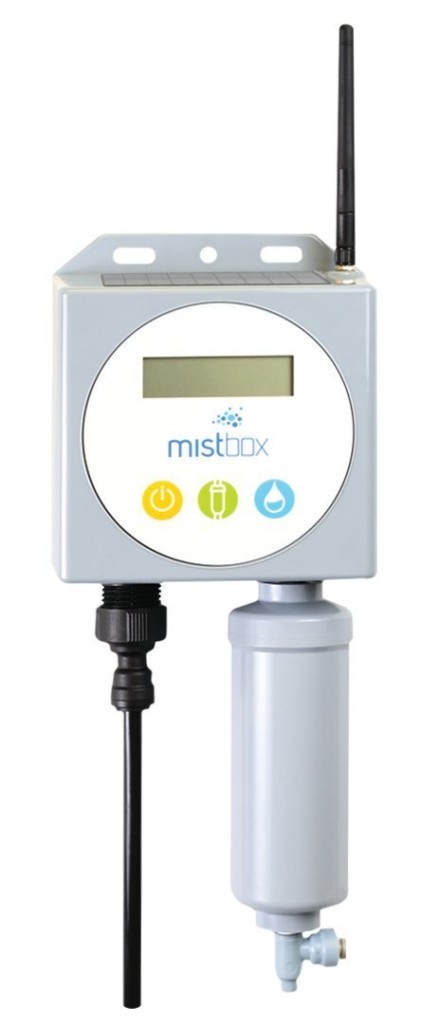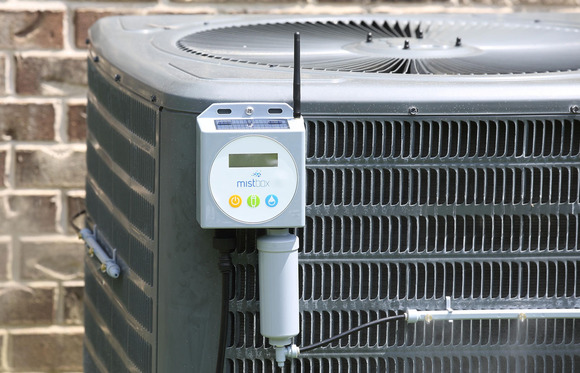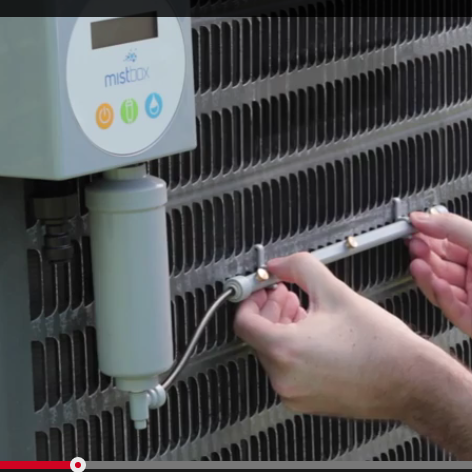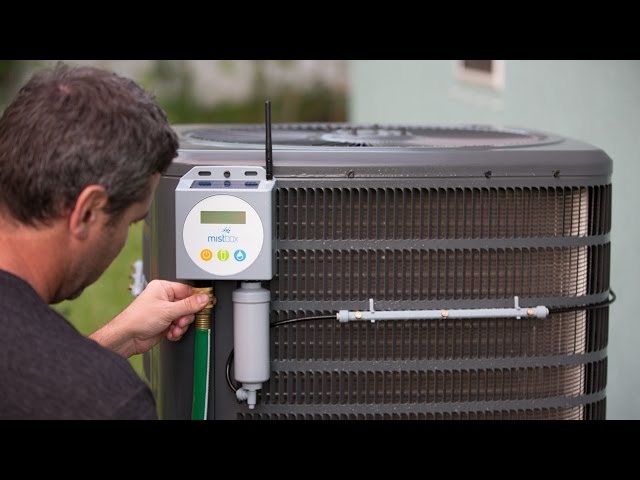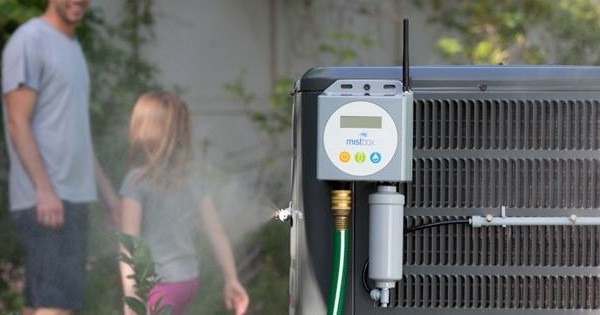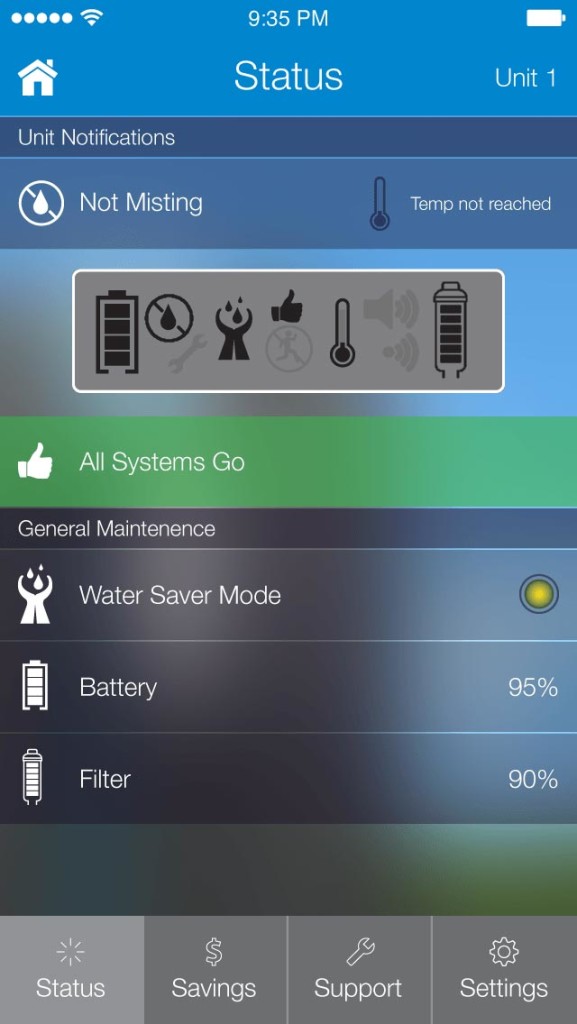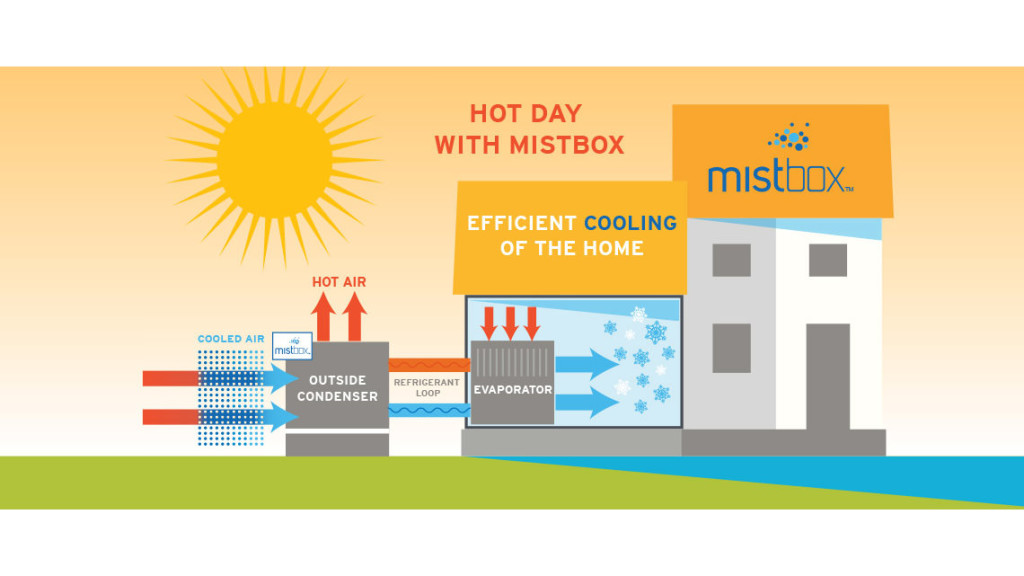If you follow Kickstarter startups, you probably ran across the Mistbox, a device you attach to your HVAC unit, which promises a 30% reduction in AC bills as well as prolonging your AC units life. The Mistbox is solar-powered, producing a 30% federal tax credit byproduct. Suffice it to say, this was one Kickstarter product with some serious backer interest.
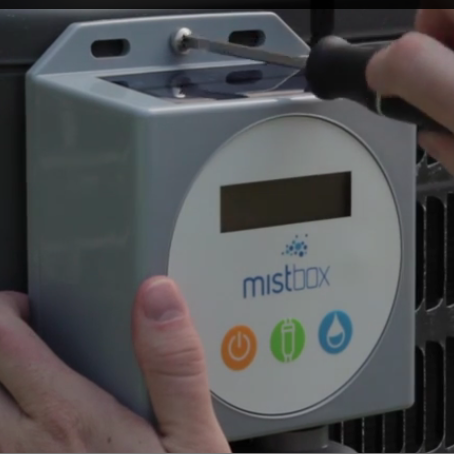 Mistbox has been shipping for a few months now, and according to consumer reviews, it not only works well, but it is delivering what it promised.
Mistbox has been shipping for a few months now, and according to consumer reviews, it not only works well, but it is delivering what it promised.
Mistbox Concept
Mistbox’s idea is not a new one, although Mistbox is the first to bring it to the residential masses. It’s driving feature is basically an evaporating pre-cooling solution where the heat is extracted out of the air surrounding an AC condenser unit using tiny water drops. This technology makes it easier for the condenser to cool the refrigerant, which is what cools the air inside your house, because the Mistbox reduces the workload your AC expends, and this ultimately cuts your energy bill and improves your AC unit’s useful life.
Mistbox Design and Use
The Mistbox fits right on the side of your AC unit, and it’s powered by a relatively small solar panel. It also has a built-in rechargeable battery when the sun goes down. The unit is smart. It knows when to mist thanks to its built-in magnetic field, sound and temperature sensors. Data from these sensors, including the power you’re conserving and your savings is relayed to it’s associated Mistbox Mobile App so you can clearly see its benefits.
Mistbox uses sound and an electro-magnetic field to detect when the AC unit turns on so it can start misting. If the outdoor temperature is at or above the set trigger temperature, (which is set with the app), misting will start. Mistbox doesn’t mist the whole time the AC is running. Rather, it cycles on and off as needed.
Setup
Setting up the Mistbox is a breeze, and takes just a few minutes. All you need is a screwdriver and the included product manual. The device ships with everything you need to install, and the kit itself includes the main control unit, a water supply line, screws and clips, a Wifi antenna and a water filter.
To install the Mistbox, you simply attach the controller to a corner of your AC unit using zip ties or screws. One end of the sprayer bar assembly attaches to the bottom of the filter on the control unit, and then the other end attaches to the AC unit with the spray nozzles pointing away from the AC unit. The four sprayer arms are connected with a thin hose that can be pushed into the arms to adjust the length.
After those physical installation steps, you then install the Mistbox app on your iOS or Android device, and that app will walk you through setting up the control unit to connect to your wireless network.
The App
The Mistbox App brings the kit all together, displaying things like local temperature, status of the unit, battery level, filter and water saving mode status, and a timeline that shows how long your AC unit was running at different times during the day. This is obviously the energy conservation piece, measuring what you’re saving in energy and dollars.
It also has a setting screen, which lets you turn functions on and off like the misting temperature trigger setting, as well as the water saver mode.
Putting it Through It’s Paces
We’ve had the Mistbox installed for a few days now, and it is clear that the AC test unit has been running at a slower workload. Additionally, the AC unit actually turns off a lot more frequently when the Mistbox is engaged. We also noticed that the produced air inside the house was significantly colder, indicating that the Mistbox is enabling a more efficient production of cold air.
It’s important to reiterate that the Mistbox comes with a high-quality filter, which guards against water and calcium corrosion, a concern when this product first came on the scene. The company recommends that if you use well water that has a hardness level above a certain level, that you install a secondary filtration system to keep corrosion in check.
Bottom Line
Mistbox does what it says. It cools your AC unit, which in turns cuts your energy bills by as much as 30% during those hot summer months. It’s easy to install, and the app delivers useful information that can help discern when and how you’re saving energy.
The Mistbox has a two-year manufacturer’s warranty, and according to the company, the unit can last you around 10 years as long as the water filter is replaced once every year. Mistbox runs $399, and you can purchase it through the company here.

